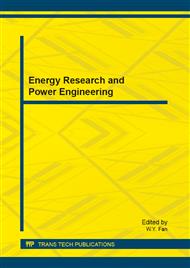[1]
S. Choi, J. H. Drese, C. W. Jones: ChemSusChem, Vol. 2 (2009), p.796.
Google Scholar
[2]
B. R. Strazisar, R. R. Anderson, C. M. White: Energy Fuels, Vol. 17 (2003), p.1034.
Google Scholar
[3]
B. Zhang, Y. Duan, K. Johnson: J. Chem. Phys. Vol. 136 (2012), p.064516.
Google Scholar
[4]
M. Sevilla, A. B. Fuertes: J. Colloid Interface Sci. Vol. 366 (2012), p.147.
Google Scholar
[5]
P. Sharma, J. K. Seong, Y. H. Jung, S. H. Choi, S. D. Park, Y. II, Yoon, II, H. Baek: Powder Technol. Vol. 219 (2012), p.86.
Google Scholar
[6]
S. Builes, L. F. Vega: J. Phys. Chem. C, Vol. 116 (2012), p.3017.
Google Scholar
[7]
M. Bhagiyalakshmi, P. Hemalatha, M. Ganesh, M. M. Peng, H. T. Jang: J. Ind. Eng. Chem. Vol. 17 (2011), p.628.
Google Scholar
[8]
C. Knöfel, J. Descarpentries, A. Benzaouia, V. Zeleňák, S. Mornet, P. L. Llewellyn, V. Hornebecq: Microporous Mesoporous Mater. Vol. 99 (2007), p.79.
DOI: 10.1016/j.micromeso.2006.09.018
Google Scholar
[9]
J. L. Li, B. H. Chen: Sep. Purif. Technol. Vol. 41 (2005), p.109.
Google Scholar
[10]
G. S. Goff, G. T. Rochelle: Ind. Eng. Che. Res. Vol. 43 (2004), p.6400.
Google Scholar
[11]
T. Filburn, J. J. Helble, R. A. Weiss: Ind. Eng. Che. Res. Vol. 44 (2005), p.1542.
Google Scholar
[12]
X. Y. Zhang, X. X. Zheng, S. S. Zhang, B. Zhao, W. Wu: Ind. Eng. Che. Res. Vol. 51 (2012), p.15163.
Google Scholar
[13]
A. Heydari-Gorji, Y. Belmabkhout, A. Sayari: Langmuir, Vol. 27 (2011), p.12411.
Google Scholar
[14]
M. Bhagiyalakshmi, R. Anuradha, S. D. Park, H. T. Jang: Microporous Mesoporous Mater. Vol. 131 (2010), p.265.
Google Scholar
[15]
P. Sharma, I. H. Baek, Y. W. Park, S. C. Nam, J. H. Park, S. D. Park, S. Park: Korean J. Chem. Eng. Vol. 29 (2012), p.249.
Google Scholar
[16]
C. Chen, K. S. You, J. W. Ahn, W. S. Ahn: Korean J. Chem. Eng. Vol. 27 (2010), p.1010.
Google Scholar
[17]
P. T. Tanev, T. J. Pinnavaia: Chem. Mater. Vol. 8 (1996), p. (2068).
Google Scholar
[18]
X. Yan, L. Zhang, Y. Zhang, G. Yang, Z. Yan: Ind. Eng. Che. Res. Vol. 50 (2011), p.3220.
Google Scholar
[19]
X. Wang, V. Schwartz, J. C. Clark, X. Ma, S. H. Overbury, X. Xu, C. Song: J. Phys. Chem. C, Vol. 113 (2009), p.7260.
Google Scholar


